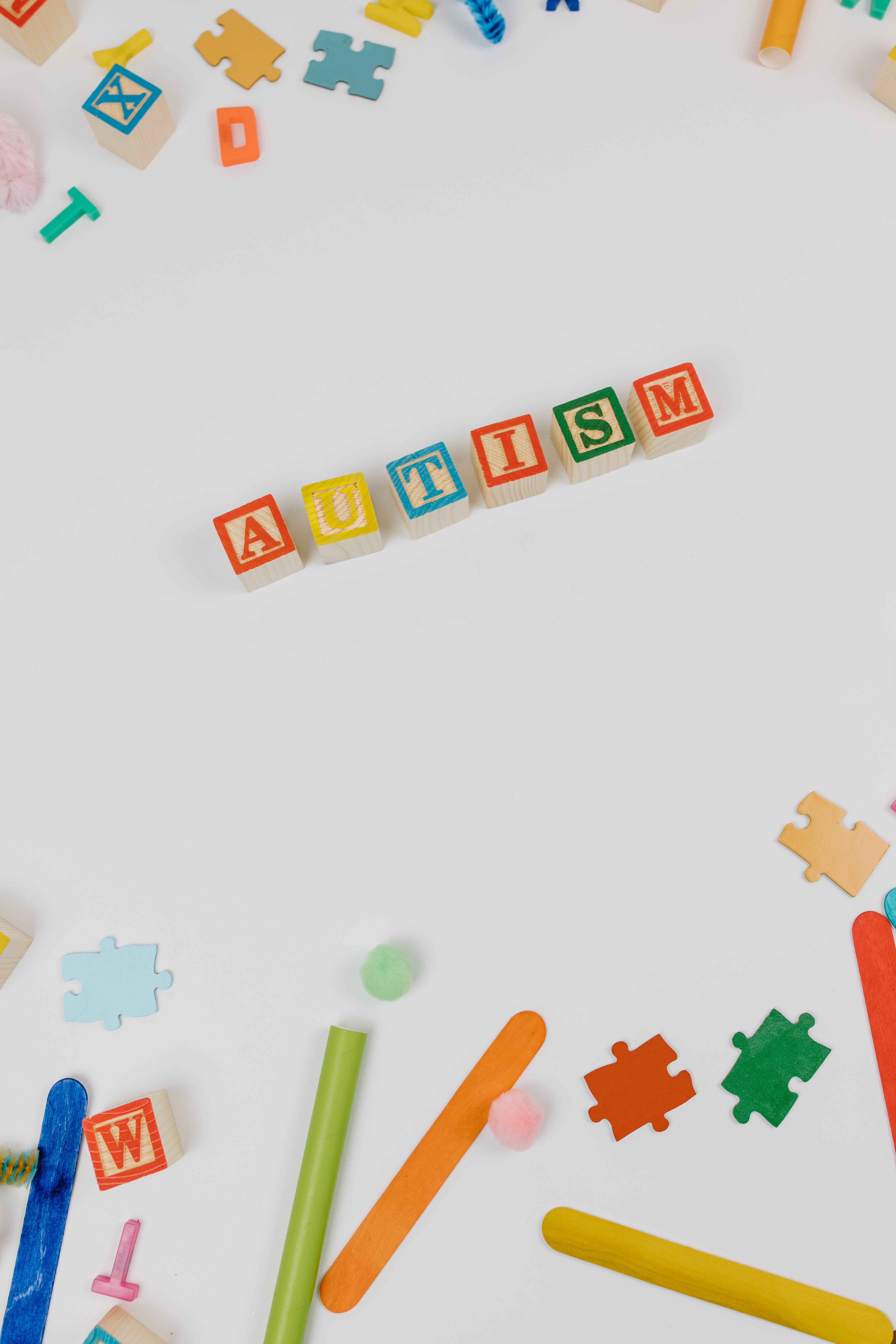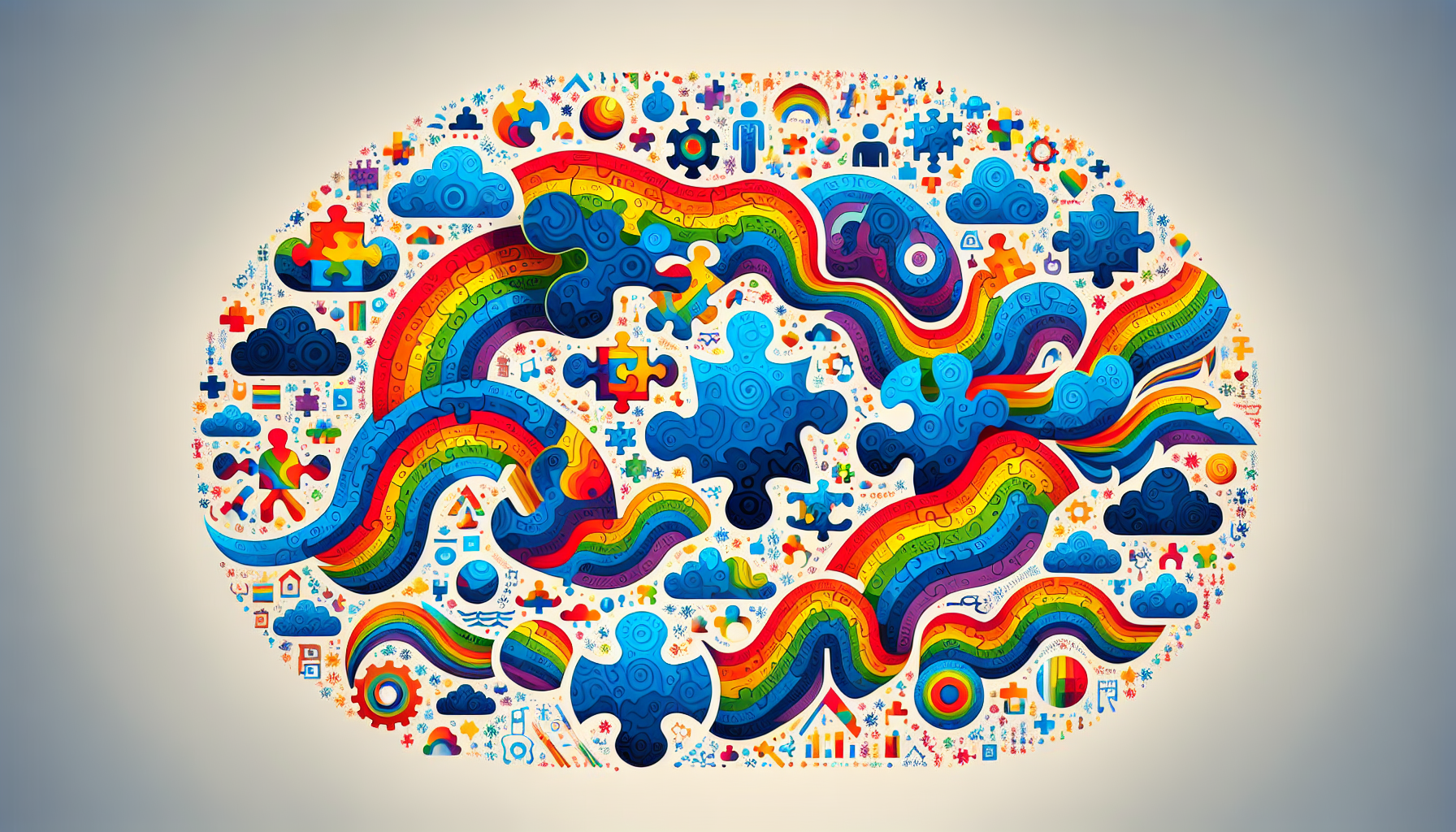Can Autism Be Outgrown or Managed?
Explore the question, "Can autism be outgrown?" and discover insights into its lifelong journey and management.


Understanding Autism Over Time
Understanding the nature of autism and its progression over time is crucial for parents and caregivers of individuals on the autism spectrum. Autism is often perceived through the lens of development, symptoms, and interventions.
Lifelong Nature of Autism
Autism is a lifelong condition, as outlined in the DSM-5 diagnostic manual. While some individuals may show improvements in managing their autistic traits over time, it is not accurate to say that one can simply "outgrow" autism [1]. Many children who appear to have overcome their autistic traits may have learned coping techniques that mask their traits rather than having outgrown them. Understanding that autism is inherent to the individual's brain development helps in acknowledging its lifelong impact.
Development and Symptoms
Symptoms of autism can vary widely and are influenced by multiple factors, including early intervention and therapeutic strategies. It is possible for children diagnosed with autism to display a range of traits and behaviors, which may include challenges with social skills, communication, and restrictive interests.
The following table summarizes common developmental milestones and traits in children with autism:
| Age Group | Common Traits |
|---|---|
| 18 months | Delayed speech, limited eye contact, lack of response to name |
| 2-3 years | Repetitive behaviors, difficulty with changes in routine, challenges in imaginative play |
| 4-5 years | Difficulty initiating play with peers, understanding social cues, or maintaining conversations |
| 6 years and older | Varying degrees of social interaction, communication skills, and adaptive behavior depending on support needs |
Early intervention, ideally by age 3, plays a significant role in addressing the development of autism. The brain's plasticity during early childhood allows for increased potential for learning and growth. Therapeutic interventions such as Applied Behavioral Analysis (ABA), play therapy, speech therapy, and occupational therapy can be incredibly beneficial for improving communication and reducing challenging behaviors [1].
The extent of improvement in managing symptoms may further depend on individual strengths. Autistic children who possess neurotypical IQ scores or strong verbal communication skills may have greater potential for noticeable advancements. Understanding autism requires recognizing that traits can improve, but the diagnosis remains evident throughout the individual's life, necessitating ongoing support and understanding. For more information on autism management strategies, explore understanding autism regression and therapy for autism and anxiety.
Factors Influencing Autism Progression
Understanding the various factors that can influence the progression of autism is vital for parents and caregivers. Early intervention, therapeutic interventions, and genetic as well as environmental factors can all play a significant role in how autism presents over time.
Early Intervention Impact
Early intervention is a crucial element in supporting children with autism. It is ideally recommended that interventions begin by age 3. At this young age, the brain has a greater capacity for making new connections and growth [1]. Research indicates that the earlier a child receives support, the more likely it is that they will show significant improvements in communication, social skills, and overall development.
| Age of Intervention | Impact on Development |
|---|---|
| Before 3 years | Highest potential for positive outcomes |
| Between 3-5 years | Moderate benefit, but less than starting earlier |
| After 5 years | More challenging to achieve comparable outcomes |
Therapeutic Interventions
Several therapeutic modalities can positively impact children with autism. Interventions such as Applied Behavioral Analysis (ABA), play therapy, speech therapy, and occupational therapy are widely recognized for their effectiveness. Medications for related conditions such as anxiety and seizures may also contribute positively to daily functioning. Each child’s needs may differ, and tailored approaches often yield the best results.
| Type of Therapy | Purpose | Common Benefits |
|---|---|---|
| ABA | Behavioral modifications | Improved behavior and learning |
| Play Therapy | Social skills | Enhanced interaction and emotional expression |
| Speech Therapy | Communication | Better verbal and non-verbal skills |
| Occupational Therapy | Daily living skills | Increased independence |
Genetic and Environmental Factors
The interplay between genetic and environmental factors is complex and continues to be a focus of research. Despite significant efforts to identify genetic components of autism following the completion of the Human Genome Project, specific genes have not been clearly linked to the disorder. This has led to autism being classified as a spectrum, with variations ranging from mild to severe.
Environmental influences such as prenatal exposures, early life experiences, and the impact of parental bonding may also affect autism's progression. Understanding these factors can help guide targeted interventions that further support an autistic individual’s development.
| Factor Type | Examples | Potential Impact |
|---|---|---|
| Genetic | Family history | Increased risk of autism |
| Environmental | Prenatal exposure to toxins | Possible developmental issues |
| Social | Parental support and bonding | Enhanced emotional and social development |
By recognizing and addressing these factors, parents and caregivers can make informed decisions regarding interventions and support systems that foster positive growth and development. For more information on autism and its complexities, refer to our article on common misconceptions about autism.
Misconceptions Surrounding Autism Development
Addressing the misconceptions associated with autism development is crucial for parents and caregivers. Many people wonder, "can autism be outgrown?" Understanding the facts can help clarify these topics.
Outgrowing Autism
The idea that individuals with autism can simply "outgrow" their condition is a common myth that needs to be dispelled. While some may observe improvements in specific traits, an accurate diagnosis of autism is lifelong. It is not possible to wholly outgrow autism, as it is a neurodevelopmental condition that an individual is born with. Some individuals, particularly those with high-functioning autism, may learn to manage their symptoms effectively with the right strategies and support. However, this does not imply that their autism has disappeared.
Research shows that many individuals with autism experience improvements over time, often due to early intervention and personalized therapies. These enhancements, however, do not indicate that autism itself has faded away. Instead, they highlight the adaptability and growth that can occur within the framework of autism. For further insights, refer to our article on common misconceptions about autism.
| Misconception | Reality |
|---|---|
| Autism can be outgrown | Autism is a lifelong condition; individuals may manage symptoms better but do not "outgrow" it. |
| Improvements mean autism is gone | Improvements reflect coping strategies and support, not a disappearance of the condition. |
Masking and Coping Strategies
Another misconception involves the concept of masking, where individuals learn to hide or suppress their autism traits to fit into societal norms. Many autistic individuals develop effective coping strategies over time, which may help them navigate social situations or manage sensory sensitivities. However, this doesn’t mean they do not experience challenges. Instead, masking often results in exhaustion and can lead to increased anxiety or stress.
It is important for parents and caregivers to understand both the benefits and the downsides of masking. While it may allow individuals to blend into social environments, it can also create a barrier to authentic self-expression and personal well-being. Moreover, as social and educational expectations increase, the pressure to mask can become overwhelming.
| Coping Strategy | Potential Benefit | Potential Downsides |
|---|---|---|
| Masking | Better social integration | Increased stress and exhaustion |
| Personalized therapy | Enhanced coping skills | Dependency on external support |
Recognizing both misconceptions and truths surrounding autism can greatly improve support for autistic individuals. By focusing on tailored interventions and building understanding, caregivers can contribute to a healthier and more supportive environment for those with autism. For more insights on therapeutic support, check our page on therapy for autism and anxiety.
Research on Autism Progression
Understanding the progression of autism is critical for parents and caregivers. Recent studies have provided insights into how autism might develop over time, focusing on ASD criteria, intellectual abilities, and adaptive skills.
Study Findings on ASD Criteria
Research indicates that some children who seem to outgrow their autistic traits may have actually learned coping mechanisms that mask their symptoms rather than truly overcoming autism itself. It is essential to highlight that even if a child does not meet the criteria for autism spectrum disorder (ASD) at six years old, they may still require support in other areas of functioning [4].
| Age | Meets ASD Criteria (%) | Requires Additional Support (%) |
|---|---|---|
| 6 Years Old | 20 | 40 |
| 10 Years Old | 15 | 30 |
Impact of Intellectual Abilities
Intellectual abilities significantly influence the outcomes for children with autism. Children with higher intellectual functioning often exhibit more adaptive behaviors and may navigate social situations more effectively. Conversely, those with intellectual disabilities may face greater challenges, leading to increased isolation and exclusion from peer activities. A study found that approximately 75% of children on the autism spectrum faced exclusion from social activities, emphasizing the need for fostering inclusive environments [5].
| Intellectual Ability Level | Social Exclusion (%) | Physical Bullying (%) |
|---|---|---|
| High Functioning | 40 | 5 |
| Moderate Functioning | 60 | 10 |
| Low Functioning | 80 | 20 |
Influence of Adaptive Skills
Adaptive skills, which refer to essential everyday skills needed for self-sufficiency, play a crucial role in determining how individuals with autism can thrive in various environments. Teaching life skills early on can help improve these skills and promote independence as children transition to adulthood [6]. It is crucial for caregivers and educators to focus on enhancing these skills to support the overall development of autistic individuals.
| Adaptive Skill Area | Importance (1-10) |
|---|---|
| Communication | 9 |
| Daily Living Skills | 8 |
| Social Skills | 7 |
Understanding how intellectual abilities and adaptive skills affect the trajectory of autism helps parents and caregivers provide more tailored support. For additional resources on autism, refer to our article on understanding autism regression.
Providing Support for Autistic Individuals
Supporting individuals with autism involves understanding their unique needs and challenges. Tailored interventions, supportive environments, and recognizing variability are key components of effective support.
Tailored Interventions
Tailored interventions play a significant role in the development and well-being of individuals on the autism spectrum. Early intervention, ideally by age three, is critical as it allows the brain to form new connections more easily, enhancing growth and development. Various therapeutic options can make a positive impact, including:
| Intervention Type | Description |
|---|---|
| Applied Behavioral Analysis (ABA) | A behavioral therapy focused on improving specific behaviors. |
| Play Therapy | Engages children through play to improve social skills and emotional understanding. |
| Speech Therapy | Helps improve communication skills. |
| Occupational Therapy | Assists in developing daily living skills and sensory processing. |
These interventions help children develop essential social and behavioral skills, and while autism may not be outgrown, individuals can experience significant improvements over time due to these strategies.
Supportive Environments
Creating a supportive environment is essential for the overall development and well-being of autistic individuals. Supportive settings can facilitate learning, socialization, and emotional growth. Positive environments may include structured routines, clear communication, and adaptations to sensory needs. Environments that foster understanding and acceptance help reduce anxiety and promote skill acquisition.
Research indicates that supportive families and communities can significantly influence outcomes for children with autism [7]. Parental involvement is correlated with better results, particularly when combined with early intensive behavioral interventions.
Importance of Understanding Variability
Autism presents differently in each individual, which is why understanding variability is paramount. Each person may exhibit unique strengths and challenges, influencing the support they need. The variability in autism can depend on numerous factors, such as:
- Intellectual Abilities: Higher cognitive functioning may lead to better adaptation skills.
- Adaptive Skills: Skills related to daily living can greatly affect independence and quality of life.
- Social Expectations: As children grow, evolving social demands can affect the visibility of autism symptoms.
Recognizing this variability allows caregivers and practitioners to tailor their approaches more effectively. Further research is needed to better understand these factors and enhance support for those affected by autism.
In summary, offering customized support through tailored interventions, fostering supportive environments, and recognizing variability enhances the well-being of individuals with autism. Additionally, the importance of early diagnosis cannot be overstated, as it lays the groundwork for effective support systems and interventions.
Looking Forward: Research and Awareness
The conversation surrounding autism is continually evolving. As understanding deepens, so does research aimed at addressing the needs of autistic individuals and their families. This section discusses ongoing studies, the importance of early diagnosis, and essential support for families and autistic individuals.
Ongoing Studies
Current research focuses on identifying factors that contribute to the progress of individuals with autism. Studies are exploring how cognitive levels, parental involvement, and early intensive behavioral interventions can lead to positive outcomes for children diagnosed with Autism Spectrum Disorder (ASD) [7]. Much emphasis is placed on understanding adaptive skills, language development, and tackling behaviors associated with ASD.
Table 1 provides an overview of key ongoing research areas related to autism progression:
| Research Focus | Purpose |
|---|---|
| Early Intervention | Assessing impacts on long-term outcomes |
| Cognitive and Adaptive Skills | Linking intellectual abilities to autism progression |
| Parental Involvement | Evaluating effect on interventions and outcomes |
Further research is crucial in uncovering how these elements interact to support those on the spectrum as they navigate life and challenges.
Importance of Early Diagnosis
Early diagnosis of autism is vital to ensure that individuals receive necessary support tailored to their specific needs. Experts recommend interventions ideally beginning by age 3, as this age allows the brain to create new connections more easily [1].
Table 2 highlights the benefits of early diagnosis:
| Benefit | Description |
|---|---|
| Timely Intervention | Early support aids in developing social and behavioral skills |
| Better Long-term Outcomes | Correct and early intervention can improve life skills |
| Increased Parental Education | Involving parents enhances understanding of autism |
Recognizing autism early can lead to more tailored and effective support strategies, which can significantly enhance the quality of life for both individuals and families.
Supporting Families and Individuals
Supporting families and individuals affected by autism requires understanding the unique variability in experiences and needs. It is crucial to offer tailored interventions based on a combination of personal traits, developmental milestones, and environmental factors. Families can utilize resources that provide insights into therapy options like therapy for autism and anxiety and the benefits of occupational therapy.
Here are some essential support strategies:
- Customized Interventions: Engage with professionals to create personalized support plans.
- Education and Resources: Provide families with information about autism, available therapies, and the potential impacts on daily life.
- Promoting Life Skills: Focus on teaching essential life skills to autistic teens, helping them navigate adolescence and adulthood [6].
By prioritizing these aspects, families can better support their loved ones and foster an environment conducive to growth and understanding.
References
Find More Articles

Does Speech Therapy Help Autism?

Encouraging Positive Behaviors in Autism
.jpeg)
Facing Parenting Challenges: Tips and Advice

Surprising Facts About Autism Spectrum Disorder

Floortime Therapy: A Path To Progress

Help Autistic Children Grasp Emotions

Overcoming Behavior Problems in High-Functioning Autism

High- Functioning Autism Sensory Issues
.jpeg)
10 Hobbies And Activities To Enjoy With Your Child With Autism

Understanding How it Impacts Behavior

Living with Autism: The Daily Battle for Adults

Autism Unmasked: Uncovering its Commonality

How to Identify Signs of Autism in Your Child

Understanding Autism: How to Recognize the Signs in Someone

How to Select the Ideal ABA Therapy Provider

How to Detect Autism Early

How to Incorporate ABA Strategies into Playdates and Social Settings

Supporting Autistic Teenagers: What You Can Do?

If I Have Autism will My Child Have It?

Improve Communication Skills in Autism

Enhancing Classroom Dynamics with ABA

In- Home ABA Therapy Programs

Incidental Teaching ABA

Is Barron Trump Autistic?: Barron Trump and Autism

Is It Possible For A Person To Develop Autism?

Is Speech Delay A Sign Of Autism?

Is Toe Walking a Red Flag for Autism?

Finding Fulfilling Jobs for Adults with Autism

Examining Level 3 Autism Life Expectancy

3 Levels of Autism: Symptoms, Diagnosis & Life Expectancy

Managing Sensory Overload in Autism

Milestone Delays In Children With Autism

Leading the Way: How the National Autism Association Supports Autism Community

Meaning of a Neurotypical Child

Navigating North Carolina's Autism Group Homes

Odds Of Having A Child With Autism By Age
%2520(1).jpeg)
Preschool for Autism: What You Need to Know

Preventing Risks For Children With Autism: Safety First!
.jpeg)
RBT Duties And Responsibilities

Reducing Self-Injury with ABA

Routine and Structure for Children with Autism

Self Stimulatory Behaviors

Vivid Examples of Autism Sensory Overload

Sibling Responsibilities for Children with Autism

Identifying Early Signs of High Functioning Autism in a Four Year Old

Uncovering Signs of Being on the Autism Spectrum

Social Success and ABA Therapy Strategies for Social Cues

Speech Delay vs Autism

Stimming in Autism: Examples, Causes & Symptoms

ABA Therapy Success Rates

Tactile Defensiveness Symptoms
.jpeg)
The Importance of Task Analysis in ABA Therapy

10 ABA Therapy Techniques To Try At Home

Technology-Assisted Interventions in Autism

The Importance of Consistency in ABA Therapy

The Importance of Consistency in ABA Therapy

Unveiling the World of Autistic Toddlers: 10 Unique Actions Explored

Tylenol Autism Lawsuit Payout

Understanding Autism in Adults

Harnessing Reinforcement in Autism Therapy

Utah Autism Group Home Services for a Brighter Future

Vaccines and Autism: Is There A Connection?

Signs of Autism in Two-Year-Olds

From Masks to Reality: Spotting Signs of Autism in Adult Men

What Are The Symptoms Of PDA Autism?

Causes of Tactile Defensiveness

Shedding Light on the Invisible: What Does Mild Autism Look Like in Adults?

Unraveling Overstimulation in Autism

What Does PDA Look Like in a Child?

What Exactly is Autism?

The Hidden Meaning of F84.0: Unveiling its Impact in Autism Spectrum Disorder

Demystifying Autisms Sensory Challenges
.jpeg)
What is Play Therapy for Autism?

Exploring the Benefits of Respite Care for Autism

Navigating the Spectrum: A Closer Look at Spectrum Disability
.jpeg)
What Is The Mildest Form Of Autism?

Who is ABA Therapy Suitable For?

Qualified Professionals for Autism Diagnosis in Adults

Unveiling the Reasons Behind the Occurrence of Autism
.jpeg)
Why "Refrigerator Mothers" Are Blamed For Autism?

How Functional Behavior Assessments Improve Treatment Outcomes

How to Incorporate ABA Therapy Techniques in Daily Routines

How to Prepare for ABA Therapy Evaluations

How to Handle Tantrums and Meltdowns with ABA Strategies

The Connection Between ABA Therapy and Emotional Well-Being

How ABA Therapy Encourages Self-Advocacy in Older Children

The Role of Functional Assessments in Addressing Sleep Issues

The Importance of Consistency Across All Caregivers in ABA Therapy

How to Involve Extended Family in ABA Therapy

How ABA Therapy Helps Develop Social Play Skills

The Role of Observation and Feedback in ABA Therapy Progress

The Benefits of At-Home ABA Therapy for Children with Autism

How ABA Therapy Can Support Functional Living Skills

How to Advocate for ABA Services in School Settings

How to Use Token Economies in ABA Therapy

How to Use ABA Strategies to Support Homework and Study Habits

ABA for Academic Success

ABA for Anger Management in Autism
Contact us
North Carolina, Tennessee, Nevada, New Jersey, Utah, Virginia
New Hampshire, Maine
Massachusetts, Indiana, Arizona, Georgia
.avif)


